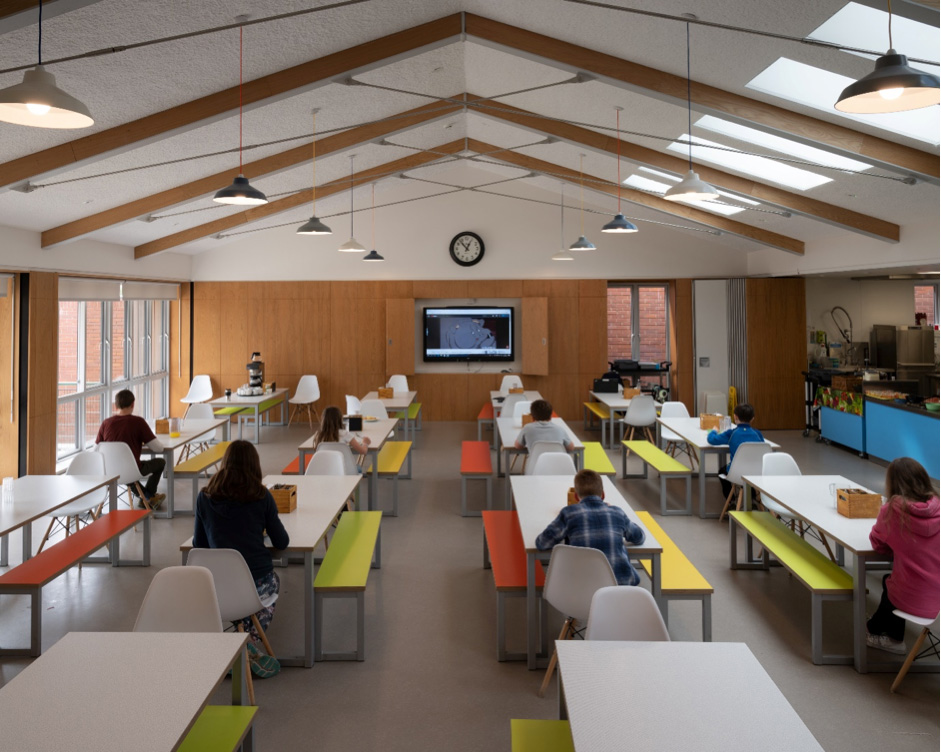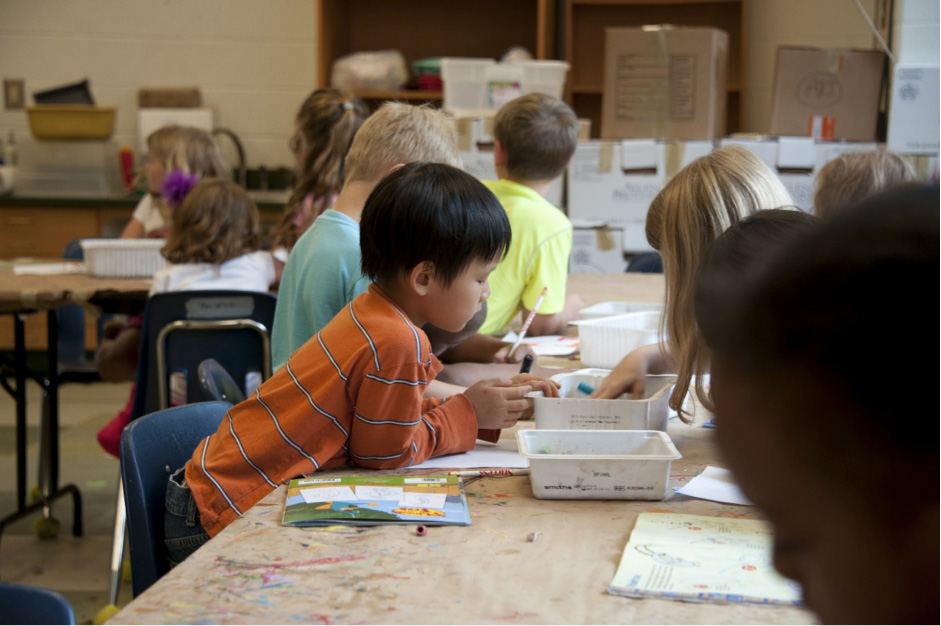Covid-19 impact on school reopening and physical education classes in Europe, China and USA
05/10/2020Overview from the MOVE Transfer Europe-China Active Schools Partners
The MOVE Transfer Europe China Project Active Schools Group held its seventh online meeting in September and discussed school reopening and the impact of Covid-19 on schools and physical education classes in different parts of the world. Each of the participants summarised the situation in their country, which gives us an overview of what is happening in Europe, China, Hong Kong, Macau and the US.

Photo: Andy Falconer
Hungary:
- Schools are already open and the education in most of the schools is face-to-face.
- Each institution was given the right at the beginning of the school year to decide on alternative or hybrid version on teaching methods (e.g. smaller groups, partial if it is possible in their places) and the right to partial closure of their school in case the local COVID situation requires prompt intervention. Schools also got official rules and recommendations from the ministry regarding procedures to be applied in public educational institutions during epidemiological preparedness. A few schools have already closed for shorter period due to cases of COVID when the classmates and staff had been in close contact with the person.
- PE is still part of the official classes.
- It is recommended to keep PE classes outdoors depending on the weather. During the classes, activities involving close physical contact should be avoided if possible.
Denmark:
- All schools are running at the moment with normal PE classes. But the government can introduce local restrictions in different municipalities if cases rise there. This is the new strategy to act locally instead of closing down the whole country when there are outbreaks.
- At the moment there are some schools that have had to ask specific classes to stay home for up to 14 days due to known cases or parties in which students have been infected.
Poland:
- Nearly all schools reopened on 1 September. The strategy so far is to avoid a country-wide lockdown. Therefore, it will be schools’ and kindergarten’s headmaster's decision (in consultation with local sanitary inspectors and the local government) whether to close the school if a case is discovered among the children or staff. So far there are approximately 100 schools and kindergartens where the children have gone back to online/blended learning. Considering the total number of 48,000 schools in Poland, it does not seem like a large proportion, but the country’s authorities are carefully monitoring the process.
- The sports equipment and facilities have to be disinfected on a regular basis.
- PE teachers are recommended to organise as many PE classes outdoors as possible. Some schools avoid contact sports and focus rather on individual sports. Again, apart from the central recommendations, there are very different approaches among the schools – some prefer the children to stay in class during breaks, so they decided to shorten the breaks so the kids wouldn’t have to spend all that time in one class.

Photo: CDC by Unsplash
Hong Kong:
- All schools are now online base and will resume face-to-face in mid-September.
- Please find the below link of arrangements related to restarting school by Education Bureau.
Finland:
- Schools are operating, but have a lot of rules to avoid the spread of COVID. the basic rule in PE is: Physical education (PE) classes will take place outdoors. School showers will not be used after PE classes, but instead bathing after classes should be carried out at home. This will be considered in planning PE class activities. Also, during breaks pupils should obey the safe distances.
- If the schools are not able to arrange the classes with safe distances, the different classes might go to school on separate days. So, it’s a hybrid model. Partly at school, partly distance learning.
- In several schools, some of the pupils and staff are in quarantine, as there have been cases of COVID and the classmates and staff has been in close contact with this person.
China:
- All schools are reopening and PE classes are also proceeding normally just with some recommendations from the state education department.
- Some of the notable effects on school children and recommendations introduced so far are:
- After a long period of home study, students’ physical fitness and motor skills have declined. Hence, schools are trying to evaluate the current condition of students and arrange non-contact exercises like jogging, roping-skipping, Kungfu, gymnastics.
- Before and after PE lessons, equipment and facilities should be disinfected appropriately and try to avoid cross-use.
- Sports activities should be arranged outdoors or in well-ventilated stadiums, generally 1.5 metres apart for keeping safe distances.
- Schools seldom organise high intensity and competitive exercises. Teachers should lead students to do warm-up exercise fully before starting class and pay attention to student’ body and emotions.
- In the early stage of reopening schools, it is not recommended to organise a collective running race.
- According to relevant requirements, large gathering activities and sports meetings are suspended. Here is the web, however in Chinese: http://www.gov.cn/xinwen/2020-05/20/content_5513332.htm
- At universities, students have resumed normal sports activities.
Turkey:
- Schools reopened on 21 September. However, 8th and 12th grade students already started to go to school due to the preparation of local exams.
- The Ministry of Education is planning to reopen primary and secondary schools step-by-step. Primary School students will attend the classes one day per week, then it will be increased after monitoring the situation.
- Education at universities will be online in Turkey.
- PE classes are currently being conducted online. However, after the reopening, they can also be provided in outdoors by keeping the distance and wearing masks.
- The use of masks is obligatory even during breaks at schools.
Bulgaria:
- In August, the Ministry of Education was preparing 3 scenarios to return back to school, the first was online education, the second option was offline and the third option was hybrid education.
- Schools reopened on 15 September.
- Regulations: the observation of the majeures, the distance, disinfection etc.
- Students are required to wear masks at school.
- The opening ceremony is not going to happen. Parents are not invited to opening activities.
- Regarding PE, the Ministry
USA:
- Most of the schools opened up across the States in mid-August.
- 90 percent of schools are online. Many parents are not comfortable sending their kids to school.
- 6 feet distance (approx. 2 metres) rule should be followed.
- Most teachers are doing PE online through different online platforms.
- Very few schools are doing the hybrid model and face-to-face model.
- Not enough space at schools to keep a safe distance.
Romania:
- There are 3 stages of plans (green, yellow and red – representing in-person to online) managed by the Ministry of Education and the local government has the permission to implement these plans. Mostly, the situation is green and kids have started to go to school.
- A lot of schools decided to be on yellow (half online-half physical). They split the classes because it is forbidden to have more than 14 students in one class.
- Related to PE, it is forbidden to use objects like balls and robes. It is recommended to do activities outdoors. It is mandatory to wear the masks during class but not during physical activities.
Spain:
- Schools are reopening and PE must be delivered by keeping the distance a cleaning the equipment.
- Indoor sports are the most effective ways of doing sports.
- In many places student competitions are not going to be run this year.
- Sports clubs can keep running their activities but always following all restrictions.
- Universities are considering blended or online education. Many of them are still not open.




